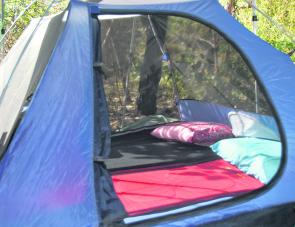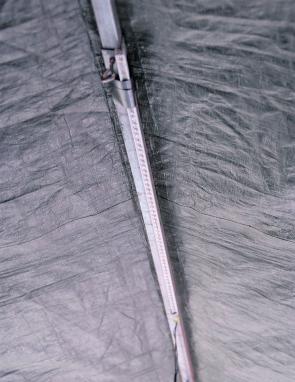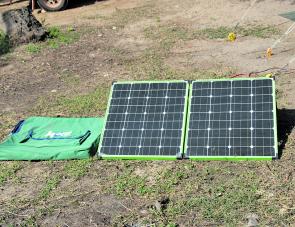In last month’s issue I discussed the considerable advantages of taking the boat to fish the eastern side of the Gulf’s waters; either Weipa, Seisia Aurukun or points in between. Plentiful fish, and some really good sized ones at that, await the boat-based angler in that neck of the woods whether it’s a creek, river or an off shore reef being fished.
The point here is that virtually all of the eastern side of the Gulf is in a lee during the Dry with the predominant south-easter being an off shore wind. That situation sure makes it easy to fish from a small boat!
But, in fairness, I also enlarged on the down side of the equation with the roughness of the gravel sections of the Peninsula Development Road demanding special toughness from the trailer, the wisdom of having a well fitted cover for the boat and the need to totally dustproof the outboard. And all this just to get to the Gulf in the first place!
However, rewards await the daring and once at Weipa, a very popular kick off point for the serious angler with a boat in tow, options are to move further afield or maybe set up camp at the Weipa Camp Grounds that are close to the town’s shops and services.
I like to rough it somewhat to really enjoy the experience of camping away from the beaten track and there are a host of places within a few hours of Weipa where peace and solitude are abundant. It’s wise though to completely restock with groceries, fuel, water and all consumables at Weipa. Be advised that Woolworths, the town’s only supermarket, won’t be open on a Sunday or a public holiday, and closes early on a Saturday. The town’s fuel outlets are pretty flexible though.
Camping is virtually the only option when the boat’s on the tow bar and the plan should be to locate a fishing area that is a bit away from the mainstream areas. Shade is essential, even in mid winter as 30°C temperatures are standard fare so, the camp’s over fly set up under some shade will be a bonus.
Do not, repeat do not camp too close to coconut palms. The white cockatoos of Cape York have evolved a technique of chewing the husk off a ripening coconut to get at the pulp inside. That’s fine, but the tree then discards that defective coconut which can fall any time day or night, windy or otherwise.
Beware, too, of having any part of that fly touch adjoining foliage lest a horde of nasty and anti-social green ants climb down to investigate what the camp offers in the way of food, plus bite anyone intending to remove them. A thorough spray of Bushman or tropical strength Aerogard around the base of all tent and fly poles will keep them from climbing aboard. Renewing the deterrent every few days is important.
When setting up the camp site a rake is very handy to remove any leaves, sticks or other debris which might be a possible hide out for scorpions or other nasties. A shade cloth ground cover is very handy but not essential. This stuff is easily washed later and can be swept while in use.
Choice of a tent is simple. It must have mesh small enough to keep out insects but large enough to allow plenty of breeze through. Most dome tents on the market fulfil this criteria with the added bonus of packing into very small packages. Generally speaking, if the selected camp site has ample shade things should be sufficiently comfortable through the day.
Night time is different in that the mosquitoes at the Cape are fanatical in their quest for blood. While repellent sprays with a DEET content are very good at keeping these critters at bay, I prefer to minimise the use of repellent and keep the little devils from biting me by wearing light weight but long clothing and using strategically placed smudge fires around the proximity of the camp. If there’s a risk of fire, mosquito coils work sufficiently to provide respite but you’ll need plenty of them. The pleasing thing is that these pests are shift workers; come daylight they vanish.
I had the use of a couple of orange light bars from Korr Lighting to try out and I believe that these special bars do deter insects. The section of the camp where they were set up seemed to be infested with fewer mozzies than other areas. We naturally used Korr solar panels to keep our spare electric motor battery and general house battery charged.
Refrigeration issues need some thought. Many rely on 12V fridges while the car’s on the move but once camp is set up and longer term use is planned, it’s very hard to go past a three-way fridge that runs on gas or alternatively a 240V model linked to a generator. For the information of Chescold owners my RC1180 runs for 12 days at maximum cooling on a 3.7kg cylinder of gas. For the best results, any refrigerator should be kept in the shade to keep the sun off the exterior as much as possible.
A wash at end of day is very refreshing in a tropical climate and it’s here that the Glind Cape Yorker really earns its keep. Camping near Weipa last July with the temperature still around 26°C at 7 pm I didn’t even bother to warm up a bucket of water, I simply hooked the unit to our spare battery and enjoyed a great cold shower via the Cape Yorker’s pressure pump. These units store readily, can be used for any salt or fresh water and are worth every cent of their modest price. Generally speaking, the Gulf has ample water and it’s usually not hard to find a source.
With a boat at your disposal the fishing is going to be well worth the effort.
That said, attrition on tackle can be high. When targeting reefies there are always barracuda biting off plastics, bait, vibes and even my flies at every turn. Mackerel we would give anything to catch in southern Queensland can also be in pest proportions, biting things off everything in an overly enthusiastic manner. River and creek fishing is always fun with barra and jacks aplenty. The odd fingermark in the rivers is appreciated as well, but this fishing can also see tackle demolished as barracuda are also get up creeks, and big cod are happy to scoff a plastic or lure and move back into their cover, seemingly undisturbed by the resulting break off. The trick is to take lots and lots of terminal tackle, plus sufficient spares all round to cover contingencies. Extra tackle won’t take up much room but can be well worth having along.
So with all that said, prepare your vehicles, sort your camping gear and get on up there. The Cape is a wonderful part of Queensland that, if you have time, can be experienced with all of your own gear quite easily these days.
Reads: 2572
Plenty of mesh on the chosen tent is a great asset for comfort at night.

Orange lighting from Korr did a decent job of repelling insects in its vicinity.

Korr solar panels will top up any batteries in short order.

Get the boat there and the fishing that follows will make it worth while.

The author’s camp site on the Cape. Setting up under good shade will increase comfort levels considerably.

Little boat, big fish: the grin on Scott’s face says it all.




